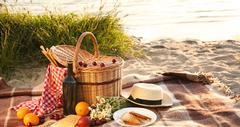Cheyenne Botanic Gardens History & Gardens

The Cheyenne Botanic Gardens were established in 1977 with the Cheyenne Community Solar Greenhouse, a non-profit, solar heated greenhouse whose first crops were harvested a year later. The Gardens were opened to the public at the new site in Lions Park in 1986, after which several buildings and additions to the Gardens were added such as the Rotary Century Plazas, a variety of outdoor gardens and labyrinths, and the Paul Smith Children's Village.
The Gardens
The Cheyenne Botanic Gardens span nine acres of beautiful landscapes which are home to several outdoor gardens and a huge 6,800 square foot conservatory which features three greenhouses. Outdoor gardens feature annuals, perennials, roses, herbs, wildflowers, and cacti, while the solar-powered greenhouse features three greenhouses. The first houses gardens of succulents and herbs, a variety of tropical and exotic plants, and a tranquil pond with koi fish. The second greenhouse is used for growing vegetables, with beds of lettuce, broccoli, onions, cabbages, carrots, and more, and the third focuses on propagation of over 50,000 bedding plants and a variety of flowers for the botanic garden grounds. The flowers propagated here are used for the beautiful flower displays that can be seen in Cheyenne parks and parkways.
The Gardens are home to a variety of specialty gardens and habitats, including a rose garden, a Peace garden, a herb garden, a water garden, annuals and perennials, a cacti display, xeriscape and native plants, and a shade-loving plant display. A wheelchair accessible labyrinth known as the 'Garden Labyrinth' was designed and dedicated to Bobby Hathaway, the former Wyoming first lady, and the Rotary Century Plazas are gardens that showcase important plants that have played a role in the development of southeast Wyoming over the past three centuries. There is also a lovely wetland display with ponds, waterfalls, and pathways. Specialty gardens include the Bedont Rose Garden, the Cactus Garden, the North and South Community Gardens, the Cottage Garden, the Reckling Herb Garden, the Rock and Conifer Garden, the Women's Civic League Peace Garden, and the Xeriscape Garden.
Other Attractions

The Cheyenne Botanic Gardens also feature an array of attractions to enjoy in conjunction with the gardens, including the Boy Scout House, the Discovery Pond, Gazebo and Zigzag Walkway, the Garden Labyrinth and the Glade, the Historic Locomotive and Tractor, the Horseshoe Arch Sculpture and Shelterbelt, and the Western Walkway. The Rotary Century Plazas feature plants from the three centuries spanning the history of Cheyenne from the 1700s to the 1900s.
More Things to Do in Cheyenne, Wyoming
The High Plains Arboretum
The Cheyenne Botanic Gardens is associated with the High Plains Arboretum, which operates as part of the Gardens and is located at the former High Plains Horticulture Research Station. The Research Station was established in 1928 with the goal of finding plants that would make the High Plains more habitable, with a focus on fruits, vegetables, ornamental plants, windbreaks. The High Plains Horticulture Research Station was closed down in 1974 and renamed the High Plains Arboretum by the USDA and is now maintained by the Cheyenne Botanic Gardens and the Cheyenne Urban Forestry. The site has several historic buildings, including quaint wood framed houses, a greenhouse, labs, and office and storages spaces and there is a 20-year plan to restore the 62-acre portion of the station that features the original remaining research plant testing sites.
Plan your Visit

Education and Outreach
The Cheyenne Botanic Gardens aims to inspire, enrich and beautify the greater High Plains community through gardening, education, volunteerism, and stewardship. With this goal in mind, the Gardens offer a variety of educational and learning opportunities in the subjects of gardening and horticulture, landscaping, agricultural science, history, renewable energy and sustainable and environmentally-friendly solutions.
The Paul Smith Children's Village
Constructed in the early 1930s as part of a Depression-era job training program, the Paul Smith Children's Village is designed to teach concepts of sustainability from the past, present, and future. The Village is set on three-quarters of an acre site that feature a variety of specialty, interactive landscapes, pre-existing stone building and a small historic greenhouse. A color-coded geodesic dome rests at the center of the site, around which are diverse landscapes and attractions, including a natural wetlands area with gravity powered waterworks, Archimedes' screw, solar and hand-powered pumps, and a farmer's windmill. There are also Indian tipis, a world vegetable garden, art/crafts plazas, a green roofed dog house, a historic sheep wagon, a puppet theater and a lovely picnic orchard.
Visitor Information
The Cheyenne Botanic Gardens are located at 710 S. Lions Park Drive in Cheyenne and is open to the public 365 days a year during daylight hours with free admission. Conservatory hours are Monday through Friday from 8:30 am to 4:30 pm and Saturdays from 11:00 am to 3:30 pm, and is closed on Sundays. The Paul Smith Children's Village is open to the public from Tuesday through Sunday from 10:00 am to 5:00 pm, however, change seasonally.
710 S. Lions Park Drive, Cheyenne, WY 82001, website, Phone: 307-637-6458
Conclusion

The Cheyenne Botanic Gardens is a public arboretum and park located in Lions Park in Cheyenne, Wyoming. Situated a few miles north of Cheyenne, the Gardens rest at an elevation of 6,200 feet and are home to a variety of hardy outdoor gardens that can withstand the region's harsh climate and three greenhouses used for growing vegetables, tropical plants and propagation. The Cheyenne Botanic Gardens are associated with the High Plains Arboretum and functions as a traditional public botanic garden, local nursery and community garden for the region.




